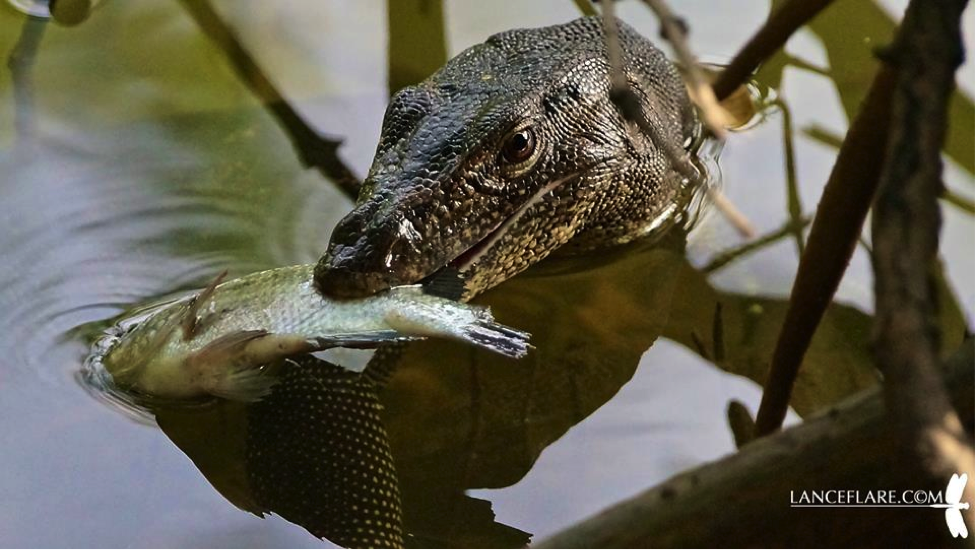Following the recent sightings of a Sentosa basket star whose appearance makes aliens in Hollywood movies look lame and a Bishan Park otter whose appearance has just made everything else in Singapore less cute, you might begin to think that our sunny shores might actually boast of some wildlife.
Well, with a rich biodiversity of more than 40,000 species, Singapore is more jungle and less concrete than what we are conditioned to. We bring you six of the most amazeballs creatures in Singapore.
1. Paddington bear crab
Holy smokes, is this for real? Nope, it’s neither a coral nor a fish, but a Paddington Bear Crab. This crab is so rare that there are only two recorded sightings of it locally (the first time in the 1960s and then again in the 1990s). This cute little critter measures only 8cm in width, and feeds on small animals such as worms. It has got hairy carapace (a cheem word for upper shell) and legs, which help it blend nicely to the background.
Special skill: Family connections. The Paddington bear crab is one of nearly 50 species of the Xanthid family of crabs in Singapore. Its relatives include the mosaic crab, notorious for being the most poisonous crab ever known to mankind. Who needs self-defence when you’ve got cousins like that?
Location: Coral reefs, typically partially buried under sand and reef rubble.
Status: Critically endangered (according to the Singapore Red Data Book 2008)
2. Estuarine crocodile
The estuarine crocodile, known also in a less atas manner as the saltwater crocodile, is a scary sight to behold. Well, looks don’t lie – its jaws are formidable enough to kill almost any animal that (dares) enter its territory. These beasts are the largest living reptiles in the world, which is unsurprising given that average lengths for males range between 4.3m and 5.2m (that’s longer than the height of a double decker bus!).
Special skill: This fella is stealthier than our Navy’s frigates. With its eyes and nostrils located at the top of its head, it can see and breathe above water while other parts of its body remains submerged. Impressive much.
Location: Canals leading to the Singapore and Kallang rivers; Sungei Seletar and Kranji Reservoir; Sungei Buloh Wetland Reserve; Pulau Tekong.
Status: Critically endangered (according to the Singapore Red Data Book 2008)
3. Russell’s lionfish
This popular aquarium fish is known to be an aggressive predator in the wild, actively using its long pectoral fins to trap small fish and invertebrates before swallowing them. It has been seen in local waters recently, although divers are advised to avoid it as its sting is extremely painful and can, in rare circumstances, lead to death.
Special skill: Aesthetics. Its impressive beauty puts the Merlion to shame.
Location: Coral reefs.
Status: More common in fish tanks than in the wild.
4. Greater slow loris
A true native child of Singapore, the slow loris is an arboreal (another fancy pancy word which basically just means tree-dwelling) creature which moves – if you haven’t guessed it by now – slowly. It is still unknown if this unhurried movement is deliberate (to prevent detection from predators), or because of its metabolic rate.
Special skill: Venomous bites. This teddy bear doppelganger carries a gland on its wrists, which renders its saliva toxic upon licking. Unfortunately even poison is unable to prevent humans from destroying its natural forest habitats, trading it as exotic pets, and poaching it for traditional medicine.
Location: Bukit Timah Nature Reserve; Central Catchment Nature Reserve; Pulau Tekong.
Status: Critically endangered (according to the Singapore Red Data Book 2008)
5. Stork-billed kingfisher
This bird is probably the closest you’ll ever find to a flying rainbow. Reaching 35cm in length, this colourful aviator is Singapore’s largest kingfisher species, towering over the eight other species which have been spotted locally. As skilled hunters, they usually sit motionless on tree branches and wait for their next meal to appear. Once ready, they will swoop down and clasp their prey – which could be anything from fish to frogs – firmly with their bill. Upon its return to the branch, the prey is repeatedly beaten before being swallowed head first. Ruthless.
Special skill: Having a loud voice. According to Wikipedia, its call is a “low and far reaching peer-por-por repeated every 5 seconds or so as well cackling ke-ke-ke-ke-ke-ke.” If only Singapore Idol accepted bird contestants – we might be more inclined to watch.
Location: Sungei Buloh Wetland Reserve; Singapore Botanic Gardens; Pulau Ubin.
Status: Uncommon resident
6. Malayan water monitor
Here’s one lizard that won’t drop its tail in fright when it sees you. Capable of exceeding 3m in length (enough to make Yao Ming feel short), this beast is one of the largest lizards in the world. It uses its forked tongue to smell, although its sense of taste remains questionable: it is known to eat rubbish and human faeces.
Special skill: All-rounded athlete. Comfortable with running (they can outpace humans), wrestling each other, climbing trees, swimming (they have been spotted swimming in the sea) and diving (they can remain underwater for up to 30 minutes). If only they could represent us at the Olympics.
Location: Sungei Buloh Wetland Reserve; Pasir Ris Town Park; Singapore Botanic Gardens; Kranji Mangrove; Kranji Nature Trail; Pulau Tekong; Pulau Ubin; some canals.
Status: Common
Top photo from here.
If you like what you read, follow us on Facebook and Twitter to get the latest updates.
If you like what you read, follow us on Facebook, Instagram, Twitter and Telegram to get the latest updates.






